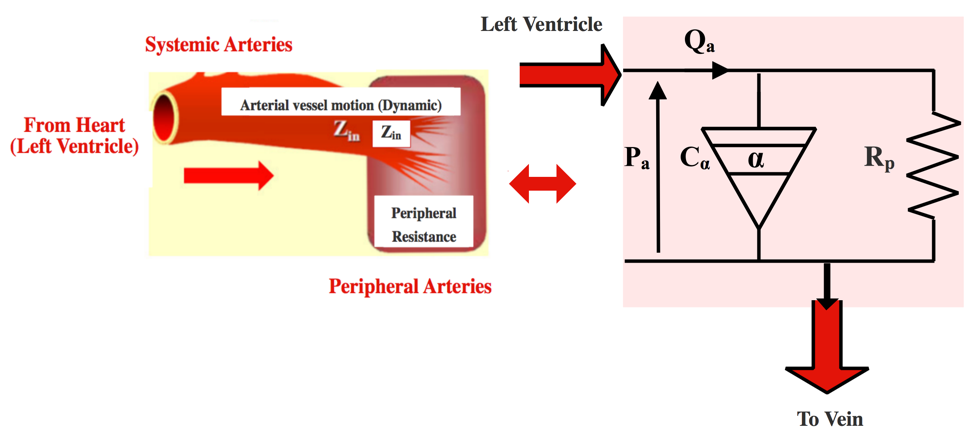Arterial stiffness is a key factor in several cardiovascular diseases such as, systolic hypertension, stroke, coronary artery disease and heart failure. These diseases are among the major causes of mortality in the world. Therefore, assessment of the arterial stiffness is important in cardiovascular research as well as in clinical routine. However, there is no standard for measuring arterial stiffness in general and aortic stiffness, in particular. Indeed, measuring aortic (central) stiffness is not practical as the aorta is not accessible.
The main focus is the development of a new index that assesses arterial stiffness in human from non-invasive continuous blood pressure measurements. This index will provide a novel, accurate, reliable and easy-to-use tool for understanding the role played by arterial stiffness in the cardiovascular system and also for the detection and prediction of cardiovascular diseases, such as atherosclerosis.
The new alternative surrogate measure of the arterial stiffness combines both model-based and data-driven approaches.
As a first step, for the model-based method we have proposed for the first time a new fractional order lumped parametric models of the arterial compliance. Taking advantage of fractional order tools, the proposed models are completely described by linear fractional-order differential equations derived from the dynamic relation-ship of the blood pressure input and volume stored in the arterial system. The results show that, the capacity of the arterial system to dynamically store the blood and the vascular structural damping are conveniently described in the fractional order of the model system. Our study provides a new lumped-parametric modeling paradigm that incorporates fractional order element to describe the dynamic of the apparent compliance, and, hence the evaluation of the arterial stiffness, in an accurate manner.

For the data driven approaches, we are working on the development of reliable data processing and analysis algorithms based on combined signal processing and artificial intelligence tools to:
- Validate of the modeling framework
- Calibrate the models
- Analysis of the different correlations
Keywords: Lumped parametric model, Data driven model, Fractional order calculus, Arterial Hemodynamics, Blind identification
Publications:
- Bahloul, Mohamed A., and Taous-Meriem Laleg Kirati. "Fractional Order Models of Arterial Windkessel as an Alternative in the Analysis of the Left Ventricular Afterload." arXiv preprint arXiv:1908.05239 (2019).
- Bahloul, Mohamed A., and Taous-Meriem Laleg Kirati. “Two-Element Fractional-Order Windkessel model to Assess the Arterial Input Impedance” has been accepted in the 41th IEEE annual conference in Engineering in Medicine and Biology Society “EMBS”, Berlin, Germany, July, 2019.
- Bahloul, Mohamed A., and Taous-Meriem Laleg Kirati. “Fractional-Order Lumped Parameter Models of Arterial Hemodynamic” has been presented in the invited session “Fractional Models of Biomedical Systems” in 41th IEEE annual conference in Engineering in Medicine and Biology Society “EMBS”, Berlin, Germany, July, 2019.
- Bahloul, Mohamed A., and Taous Meriem Laleg-Kirati. "Three-element fractional-order viscoelastic arterial windkessel model." In 2018 40th Annual International Conference of the IEEE Engineering in Medicine and Biology Society (EMBC), pp. 5261-5266. IEEE, 2018.
- Bahloul, Mohamed A., and Taous Meriem Laleg-Kirati. "Arterial Viscoelastic Model using Lumped Parameter Circuit With Fractional-Order Capacitor." In 2018 IEEE 61st International Midwest Symposium on Circuits and Systems (MWSCAS), pp. 53-56. IEEE, 2018.
